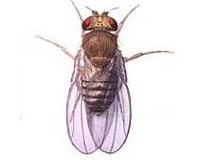 |
Brussels (AFP) Jan 18, 2011 Renewable energies could furnish 99.5 percent of European Union electricity needs by 2050 if nuclear loses its priority access to distribution networks, Greenpeace said in a report released Tuesday. The environmental campaigners said that windfarms are "often stopped in peak production periods to give priority access" to electricity generated by nuclear reactors and coal-fired power stations. Greenpeace researchers said that solar energy in Europe's south and wind energy from the north could supply 68 percent of the 27-nation EU's electricity needs in 2030 and 99.5 percent by the middle of the century. However, the group claimed that would require governments to change policy tack and favour investments in green energy to the tune of 70 billion euros (94 billion dollars) by 2030 and another 28 billion euros over the following decade "It's a question of choice," said campaign figurehead Jan Vande Putte. Renewables produced 16.1 percent of German electricity needs in 2009, more than double the total six years earlier, according to the German federation of renewable energy producers. Greenpeace is trying to influence the debate in the run-up to a February 4 summit of EU leaders representing half a billion people.
Share This Article With Planet Earth
Related Links Powering The World in the 21st Century at Energy-Daily.com
 Fruit Fly Nervous System Provides New Solution To Fundamental Computer Network Problem
Fruit Fly Nervous System Provides New Solution To Fundamental Computer Network ProblemPittsburgh PA (SPX) Jan 17, 2011 The fruit fly has evolved a method for arranging the tiny, hair-like structures it uses to feel and hear the world that's so efficient a team of scientists in Israel and at Carnegie Mellon University says it could be used to more effectively deploy wireless sensor networks and other distributed computing applications. With a minimum of communication and without advance knowledge of how the ... read more |
|
| The content herein, unless otherwise known to be public domain, are Copyright 1995-2010 - SpaceDaily. AFP and UPI Wire Stories are copyright Agence France-Presse and United Press International. ESA Portal Reports are copyright European Space Agency. All NASA sourced material is public domain. Additional copyrights may apply in whole or part to other bona fide parties. Advertising does not imply endorsement,agreement or approval of any opinions, statements or information provided by SpaceDaily on any Web page published or hosted by SpaceDaily. Privacy Statement |